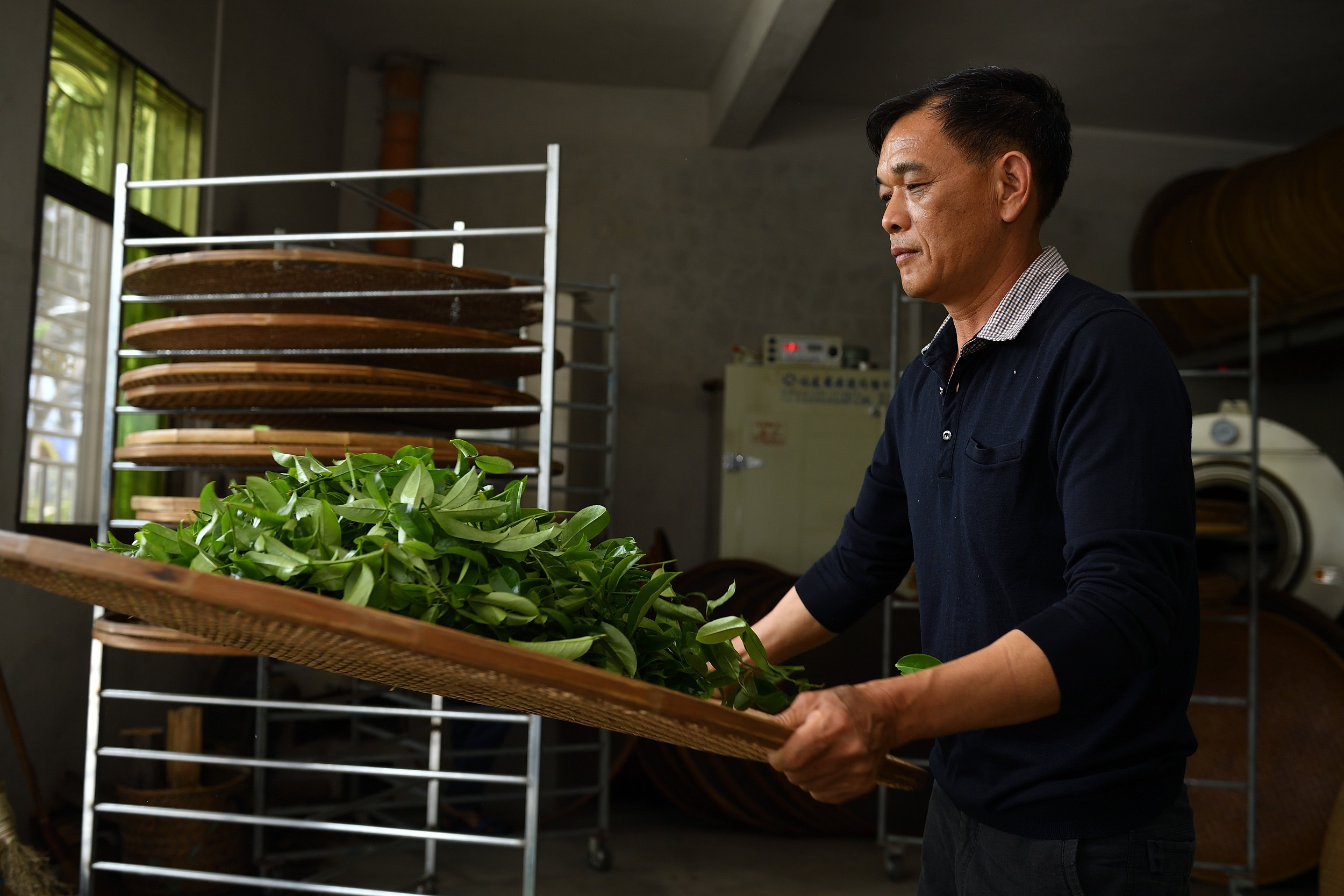Oolong Tea: Green Leaves with Red Edges from Rocking

A tea farmer rocks the tea leaves, which is a key process in the production of oolong tea. (PHOTO: VCG)
By ZONG Shihan
Oolong tea or blue tea, one of the six main types of tea in China, is a semi-oxidized tea. The oxidation level of oolong tea is between green tea and black tea, combining the fresh aroma of green tea with the rich flavor of black tea. After brewing, the leaves of oolong tea show green in the middle and have distinct red edges.
In terms of appearance, representatives of oolong tea include the strip-shaped Wuyi rock tea, the spherical Tie Guan Yin tea, and the hemispherical Dong Ding tea.
Oolong tea undergoes the most intricate processing among all tea varieties. Typically, the processing involves withering, rocking, fixation, rolling and drying. Among these steps, rocking is crucial in shaping the unique character of oolong tea. The physical friction generated by alternating rocking and standing promotes the enzymatic oxidation of polyphenols in tea leaves, resulting in green leaves with red edges. At the same time, the evaporation of water contributes to the development of aroma.
Furthermore, some oolong teas involve roasting at the end of their processing. For example, the heavy roasting of Wuyi rock tea, represented by Da Hong Pao, is a traditional step. The roasting temperature can reach over 150°C, and the process may last for more than 10 hours. The process gives the tea a distinct roasted flavor and a strong taste. Therefore, if people get used to the taste of rock tea, they may feel tasteless when drinking other teas.
Oolong tea is rich in vitamins, tea polyphenols, and plant alkaloids, which can assist in improving immunity, lowering blood pressure, and delaying aging.


